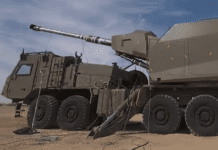
This post is also available in:
 עברית (Hebrew)
עברית (Hebrew)
A new use of facial recognition technology aspires to reduce or even eliminate deadly crimes like mass shooting events. Using the same science and same theory as facial recognition technology, a software would identify weapons anywhere there’s a security camera rolling.
The technology doesn’t only analyze the mathematical representation of faces but also the potential for weapons.
The software uses state of the art computer vision and artificial intelligence techniques to analyze hundreds of thousands of parameters to identify any threatening objects. They then alert officers to know it’s happening, according to wgntv.com.
“Authorities will be made aware immediately that a gun has been drawn,” according to a representative of TrueFace, the manufacturing company.
The software claims the ability to detect five classes of weapons, including shotguns, rifles, pistols, knives and swords.
The company said there is a way to prepare so that mass shootings might be prevented from happening, and that their advanced software could be the solution.
“We feed it thousands of images of firearms, so we have all sorts of reference points, and when that gun is shown on the camera feed , we can recognize that is a gun with a very high level of confidence.”
After a gun is detected, the system can notify law enforcement in as little as three seconds, reducing response time considerably.

























